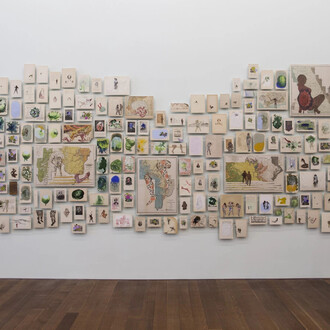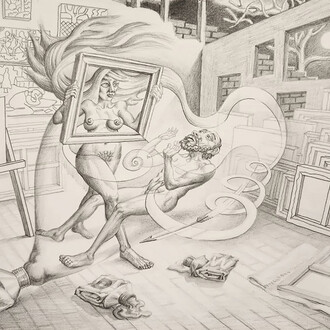Seeking to make “everyday objects shriek aloud,” or make the familiar unfamiliar, Belgian artist René Magritte created some of the 20th century’s most extraordinary—and indelible—images. This exhibition, the first major museum show to focus on the artist’s most profoundly inventive and experimental years, features over 100 paintings, collages, drawings, and objects, along with a selection of photographs, periodicals, and early commercial work, that trace the birth of the themes and strategies Magritte would go on to use throughout his long, productive career—and which make his paintings so unforgettable today.
The exhibition begins in 1926 in Brussels, where Magritte created paintings and works on paper that first gained him recognition as a Surrealist and that aimed, in his words, to “challenge the real world.” It follows the artist to Paris in 1927, where he met Surrealists like André Breton, Salvador Dalí, and Joan Miró, and created his first breakthrough word-image paintings such as his legendary The Treachery of Images, perhaps better known by its playfully perplexing message, “Ceci n’est pas une pipe.” Returning to Brussels in 1930, Magritte continued his search for new forms of image making and in 1933 began a series of paintings that provoked disturbing and unexpected associations between things that make the ordinary and daily life strange.
The exhibition concludes with a remarkable group of works Magritte made in London and in Brussels between 1937 and 1938, with a particular emphasis on the commissions he completed for the eccentric British collector Edward James, including the Art Institute’s own Time Transfixed. The show’s chronological endpoint, 1938, marks both a historically and biographically significant moment: it was just before the outbreak of World War II and the year Magritte delivered an important retrospective account of what had made him a Surrealist painter.
Throughout these seminal years, Magritte used displacement, transformation, metamorphosis, and the “misnaming” of objects as well as the representation of visions seen in half-waking states, consistently unsettling the balance between nature and artifice, truth and fiction, reality and surreality. His images, then and still today, force us to question the nature of appearances—both in the paintings and in reality itself.



















